For just five years in the music and film industries, Tupac Shakur made an unparalleled impact on American pop culture unlike any other rap artist that preceded his cometh. Yet he has been revered for the past twenty years since as Hip Hop culture’s most storied martyr, and a Black American revolutionary.
Despite his personal pitfalls and unwarranted attacks on his life throughout his career, the legendary rapper formerly known as “MC New York” skyrocketed to fame and became a sex symbol that used his power to profess his intelligence to the media, and inspire black youth to take action against their oppressors. But he was embraced by youth from all corners of the globe, and his presence resonates twenty years since his untimely death on September 13, 1996.
The HipHopDX writing full-time and freelance writing staff each have personal experiences with the Bronx-born transplant to California. Whether we each fall into various age groups that either witnessed or had to do back research on why Shakur remains part of the pop cultural zeitgeist today. Here are our memoirs about how Tupac’s art affected our lives every year from 1991, when he emerged onto the rap scene from being a backup dancer for Digital Underground, to when he became a pop superstar towards the end of his life, through today when rappers still use him as a metaphor for excellence and supremacy in Hip Hop.
1991: Nothing Was The Same After 2Pac
https://www.youtube.com/watch?v=Mnm0FILNb5M
Dana Scott: Whenever MTV had a world premiere of a video back then, it was an event to see something brand new by your favorite music artists. It wasn’t uncommon to call up your friends on your house’s landline or discuss what you saw at the school the next day. Digital Underground was coming off the heels of their smash single “The Humpty Dance.” When I saw Yo! MTV Raps premiere their “Same Song” video — a vehicle for the film soundtrack to Nothing But Trouble — D.U. was one of rap’s biggest acts. They had the clout to feature N.W.A’s Eazy-E and Dr. Dre as well as Dan Aykroyd, one of Hollywood’s top actors at the time who was in that film, for the music video. I was somewhat blown away when I saw the group’s new MC in a dashiki being carried like an African king, introduced to the world through his infectious eight-bar verse. It was a contrast to the kitschy aesthetic of the group’s Humpty Hump character and was like witnessing a changing of the guard, similar to when Dr. Dre introduced Snoop Dogg to the world on “Deep Cover” that same year.
Jesse Fairfax: As a native New Yorker, I wouldn’t call myself a 2Pac enthusiast or a devotee, but his presence was pretty much unavoidable in my formative years. My story begins with “Same Song” like most others, “Brenda’s Got a Baby” was too dramatic for me [as much as they’re needed today, I didn’t love that era’s cautionary/dramatic tales like this and MC Lyte’s “Poor Georgie”] and every kid in the hood either wanted to be Bishop or stay far away from anyone emulating that character.
1992: 2Pacalypse Then and Now
Dana Scott: Tupac was an up-and-coming rapper rapidly gaining recognition from his acting roles. His appearance in NBC’s A Different World, opposite his childhood friend Jada Pinkett Smith, and his villain role in Juice made Hollywood executives, suburbanites, and the ‘hood pick up on his immense talents quickly to the point where he wasn’t just pinned as a rapper trying to break into acting. It seemed like he was a seasoned thespian. When I saw Juice for the first time, I was 12 years old, and it was the Friday that the movie was released. My dad took me to watch it near my hometown of Norwich, Connecticut. From the opening scene, his character “Bishop” was very believable— not a contrived or forced effort like most rappers who relied on musical scenes to compensate for their lack of acting skills like in other preceding Hip Hop-focused films Krush Groove, Beat Street, Tougher Than Leather, or House Party. Also, when I saw his videos for the singles off his debut album 2Pacalypse Now, you could tell that he was unafraid to expose his vulnerability to his listeners, which was rare for a gangsta rapper at the time. You see that in his videos for “Trapped,” “Brenda’s Got a Baby,” and “If My Homies Call” which is Hip Hop’s answer to Dionne Warwick’s 1980s staple “That’s What Friends Are For.”
1993: How Tupac Kept Our Heads Up
Ural Garrett: The first time I heard 2Pac was on Digital Underground’s “Same Song.” Like many elementary school kids glued to the radio (when it was really good), 2Pac didn’t really matter on the solo tip until “I Get Around” which places me around first grade. From every backyard BBQ to random trips to the Slauson Swapmeet with my big sister, that was easily the song of summer 1993. ‘Pac following up with “Keep Ya Head Up” proved he could set the player shit aside for some poignant moments. At that age, all that didn’t matter because it was it just sounded dope.
Gino Sorcinelli: With someone as prolific as 2Pac, who seemed to live in the studio recording material 24-hours-a-day, it was easy to overlook his extensive and impressive list of guest appearances. I’m thankful Roc Raida put MC Breed’s 1993 single “Gotta Get Mine” on his 187 FM mixtape, as it sparked my interest in tracking down more ‘Pac guest appearances. Between the scratched horn sample and the “I gotta get mine, you gotta get yours” chants on the chorus,”Gotta Get Mine” had a very radio-friendly feel, but that didn’t stop ‘Pac from bringing his trademark intensity to the song. Telling fans, “I live the thug life, baby, I’m hopeless. Chokin’ off indo, tryin’ to keep my focus”, 2pac’s verse is a perfect representation of the inner struggle between right and wrong he seemed to deal with for much of his career.
Dana Scott: BET wasn’t a part of basic cable yet in 1993. But one day, I came home from school, turned on the TV, flipped through some channels, and serendipitously found 2Pac’s “Keep Ya Head Up” video on the screen with the original BET symbol. Finding 2Pac on the screen felt like “Eureka! I’ve arrived in life.” That video resonated with me immediately because teenage pregnancy was rampant during the early 1990s, especially my small, remote hometown. I knew quite a few female classmates who were 13, 14-year-old babies having babies and were left without the fatherly help they needed. “Keep Your Head Up” was an anthem that helped them keep hope for their children.
1994: Holla If You Heard Him
Jesse Fairfax: “I Get Around” was a really fun song. Even if the video was a little too out of control for my liking, Pac seemed not only larger than life but heroic when you’d hear about him getting into a shootout with undercover cops, witness him survive five gunshots and see footage of his iconic spitting at the paparazzi. Behind all of the bravado, in retrospect I see a paranoid young man not knowing who he can trust, putting on his best game face for the world [especially after the infamous Quad Studios shooting and his incendiary interview with Kevin Powell for Vibe magazine’s April 1995 issue.]
Dana Scott: By this time, Tupac was a bonafide superstar. He was everywhere in the news and the silver screen. He had starred with Janet Jackson, the biggest pop star on the planet next to her brother Michael Jackson, in Poetic Justice in 1993, and was in the streetball flick Above the Rim as the villain “Birdie” the following year. It was like a reprisal of his “Bishop” character in Juice, but with a buck-50 scar on his face. In three consecutive years, he had a hat trick with leading roles in three of the most popular black films. The film featured his song “Holler If You Hear Me,” which has that bassline that kicks in on top of that sped-up George Clinton “Atomic Dog” sample. It makes you want to grit your teeth and take up arms against everyone and everything you hate in the world. Tupac embodied #BlackLivesMatter like 20-plus years before that hashtag was even thought of. Also, that song was on his second album Strictly 4 My N.I.G.G.A.Z., which converted a lot of heavy metal headbangers I knew who became sudden rap fans. That album’s aggressive content and beats were the corner for a lot of white kids I knew who despised rap music just a few years prior. That’s a testament that kids of all colors can relate to feelings of angst, searching for their identity in an unforgiving, unjust society.
1995: Tupac Against The World
Kyle Eustice: In 1995, I was the typical angsty teenager growing up in Omaha, Nebraska (of all places). I had discovered Dr. Dre’s The Chronic in 1992 and had really dove head first into that specific genre of rap (it probably didn’t hurt that I was a huge Parliament-Funkadelic fan). After one particularly nasty argument with my mother, I wanted to show her how much I loved her and that I was sorry. I thought playing her “Dear Mama” while she drove me to my friend’s house was the perfect way to speak to her heart. Too bad she didn’t feel the same way. I don’t think she could get past the fact it was “gangster rap.” Either way, that song spoke to me and made me remember how much I loved my mama, too.
Dana Scott: Being from the Tri-State area, Biggie’s “Who Shot Ya?” was the mixtape monster in the Northeast that every kid wanted to hear. It was inevitable to think about Tupac being the subliminal target of that track because it came out not long after he was shot five times in New York City in 1994. That song helped cement Biggie’s position as the King of New York because the beat and the lyrics were fire, with every pun intended. But the release that song didn’t help Biggie’s paranoia from the windfall after 2Pac was shot at Quad Studios.
Ural Garrett: Coming from a single mother home myself, “Dear Mama” was simple enough for my eight-year-old self to totally understand. And I watched enough MTV and BET to somewhat understand the whole Quad Studios shooting, sexual assault case and everything that led to him signing to Death Row.
Gino Sorcinelli: “So Many Tears” is the Pac perfect song and remains at the top of my list. The beautiful Stevie Wonder sample flip from Shock G and lyrics like, “My every move is a calculated step, to bring me closer to embrace an early death, now there’s nothing left” showcase Pac’s eerie habit of predicting an early exit from this world. If you missed Me Against the World, now is the perfect time to give it a listen. It still sounds as good as it did 21 years ago. Despite being bitter rivals at the end of their lives, we’re lucky to have two amazing 2Pac and Biggie collaborations that were recorded while they were still alive. The first was a legendary live freestyle performance at the 1993 Budweiser Superfest at Madison Square Garden. The second was the original version of “Runnin'”, which appeared on the One Million Strong soundtrack in 1995. Easy Mo Bee, who did extensive work with both artists, provided the instrumental and both rappers brought their A-game. I remember finding this on cassette single back in 1995 or 1996 and later thinking how sad it was that they didn’t work together more. If this song was any indication, they could have made some timeless music. Eminem later brought the song newfound popularity with his 2003 rework for the Tupac: Resurrection album.
1996: Wanted Dead or Alive
https://www.youtube.com/watch?v=yRtBgB1nCaU
Jesse Fairfax: To this day I don’t know if Suge Knight put the battery in his back, but “Hit ‘Em Up” was the ultimate sign of disrespect, far removed from silly trash talk. We waited on a Biggie response and never got much other than King Sun’s “New York Love [All Eyez On Sun]” and a few lines from Lil Kim on a remix of “Big Momma Thing” [I didn’t take Mobb Deep’s “Drop a Gem on ‘Em” for more than random subliminals at the time.] What I recall most was a feeling of social armageddon surrounding 2Pac. No exaggeration, it didn’t feel safe to go outside in New York the following summer/early fall 1997 after 2Pac’s passing. His voice lived on from the grave firing at everyone from Bad Boy Entertainment to Dr. Dre and Nas on Makaveli [“Bomb First” was particularly startling] but Bone Thugs-n-Harmony’s “Thug Luv” felt more ominous than ever. No one could have predicted the timing, but a new song with Pac’s trademark venom towards player haters/busters and gunshots in the beat a few short months removed from Biggie’s death was the harbinger of more casualties.
Kyle Eustice: Whenever I hear “2 of Amerikka’s Most Wanted” song, I will never forget being at a random party in the late ‘90s when a group of frat boys, who thought they were probably ‘oh so cool,’ put this track on. There’s no way to deny this is one of the hardest tracks Snoop has ever been on (aside from “Deep Cover” with Dr. Dre). Admittedly, I had quite a few drinks, so out of nowhere, I just start rapping. I knew every single word by heart and after the track was over, I had everyone at the party coming up to me, saying “You’re the shit” (laughs). Now, after 10 years of not drinking, there’s probably no way I could ever do that again, but for a few minutes that night, I was fearless.
Gino Sorcinelli: Though I was a casual fan of ‘Pac before his untimely demise, and I must admit that I didn’t fully appreciate his catalog until after his passing. As a 7th grader growing up on the East Coast in Massachusetts when he was murdered, only a few of my friends were die-hard fans. One friend, in particular, was stunned and saddened by the news and encouraged me to take a close listen to his work. I bought Me Against the World a short time after his death and it remains my favorite album of his. I discovered it right around the time rap music because a central part of my life and I have vivid memories of playing it on repeat in my room, blown away by the emotion and energy in his voice.
Ural Garrett: “California Love” became a statewide anthem. When All Eyez on Me came out, East Coast vs. West Coast drama didn’t matter much either as I thought Big was just as dope as ‘Pac. However, everyone understood who was the target of “Hit ‘Em Up.” It was pretty funny to me. Then again, when you’re a kid, you don’t understand the possible ramifications of saying “You fat muthafucka, that’s why I fucked yo bitch.”
A friend from church had her birthday party at this house in Gardena, California. Most of the adults were inside watching the [Bruce Seldon vs. Mike Tyson fight] while I traded barbs with her cousin (actor) Orlando Brown. He’s always been wild and funny. Since there wasn’t any by-the-moment news due to social media, I didn’t find out about the [Tupac shooting] until the morning after. I thought he would survive considering he survived the Quad Studios shooting just two years prior, not to mention he was in that Las Vegas hospital for several days after it happened. When the announcement eventually came that he passed, that’s all everyone in class could talk about. When Power 106 had Big Boy and was the No. 1 Hip Hop radio station in L.A., I remember them playing old Pac stuff for days. What strikes me at the time was the conspiracy theories that developed in the midst of all of that. One thing was for sure, I couldn’t spell “Makaveli,” but I was totally interested in how that related to ‘Pac allegedly faking his own death.
Dana Scott: I had been working my second week at my second job ever as a 16-year-old kid in a Walgreens pharmacy. When my dad came to pick me up from work, he told me that 2Pac wasn’t going to make it, according to the latest news reports. I felt sad because I had seen him rise and fall on TV within five years. I came home around 11 p.m. after the store closed and immediately turned on MTV. The world premiere of his latest single off All Eyez on Me, “I Ain’t Mad At Cha,” was pending for a world premiere at midnight. MTV News reporter Tabitha Soren, who had interviewed Tupac previously, seemed stoic when she reported that he had succumbed to his wounds from being shot in Las Vegas one week prior, and I didn’t want to believe it. She said to the viewers the video, “You might call it prophetic.” She was correct: Tupac was shot at the beginning of the video, had an all-white suit on in Heaven with other deceased black entertainment legends, and had played an angel following his friend around in the video. That spooked me out to no avail and still does when I see the video to this day. People really thought 2Pac went into a seven-year exile like the Machiavelli book The Art of War and persona that he adopted before he passed. Sad to say, we eventually had to accept he wasn’t the “Black Elvis” we wished he was alleged to be.
‘Til The End Of Time: Pac’s Legacy and Love from Hip Hop’s Younger Generation
Jesse Fairfax: Perhaps my fondest 2Pac related memory occurred on an NYC train the summer of 1996 when All Eyez on Me was one of the hottest albums in the world. A gentleman proceeded to blast “U Cant C Me” on a radio while a car full of aghast passengers surely predisposed to looking at Rap as jungle music watched with terror in their eyes. He wasn’t menacing or threatening, he calmly said “I just got out” [I assumed this referred to a stint behind bars and having just watched HBO’s The Night Of, looking back I understand his catharsis.] He then played it loudly at least two more times without a care in the world, this was his meditation of sorts. 2Pac’s voice made Hip Hop exciting for me as a teenager, but it wasn’t until years after his passing that I’d understand he was channeling the rage and turmoil of black men everywhere. Taken from us at age 25, who knows what he would have developed into given the chance.
Victoria Hernandez: I first fell in love with Tupac when I heard the bell toll from “Hail Mary.” I was a student manager for our high school football team and just discovering my passion for Hip Hop. Every time this song played over the loudspeaker I would literally get chills down my spine. Just the rawness and sincerity in Tupac’s voice. The fact that he didn’t have all the answers, but a prayer to the Virgin Mary and a hustle that made himself one of the greatest of all time. And then at the time Lil Wayne was one of my favorite rappers and I put it together that he took “I ain’t a killer but don’t push me” from this song for “Right Above It,” I was like “Wow, this guy’s really is who people says he is.” And yes, I was late on seeing Juice. I only saw it a few years ago because it was on Netflix. But it was so good! I had always viewed Tupac as a charmer (yes, I’m a typical girl), but to see him play such a dark, heartless character was so powerful to me.
Homer Johnson: My earliest memories of Tupac were listening to “Changes” at a birthday party and being told, “This guy just died.” But as I got older, the appeal was obvious and I dove in head-first. Because the internet wasn’t what it is now, the release of Tupac: Resurrection marked an incredibly important moment for me. In 2003, as an adolescent fan busy awaiting his return from the dead, this was my unadulterated look into Pac’s life. Tupac: Resurrection made such an impact on me because it hammered home the most important lesson: he was a prophetic force with immense talent in multiple mediums, playing chess while other rappers were playing checkers.
Aaron McKrell: Eminem and Lloyd Banks exalt Tupac in their songs “Till I Collapse” and “Addicted,” respectively. Those are a just a couple of a slew of homages to Tupac that I heard as a teenager in the aughts growing up in Erie, Pa. It seemed like every rapper I listened to was influenced by, a fan of or downright idolized 2Pac. I had to find out what the buzz was all about. What I found lived up to every bit of hype ever associated with Pac’s legend. His emotional music resonated with me, a reluctant outcast searching for his place in the social stratosphere. Songs like “Keep Ya Head Up” and “Hold On Be Strong” were valuable doses of optimism, while I connected with the desperation and pain of “Only God Can Judge Me.” That I was five years old when Pac died and can connect so deeply with his music is proof that memories live and die, but Makaveli will live on until the end of time.
Scott Glaysher: As a 10-year-old rap fan circa 2003, who grew up the Toronto suburb of Aurora, the first cognizant mention that I heard about 2Pac was when 50 Cent’s “In Da Club”: “I want them to love me like they love Pac.” Like any kid gripped with this newfound obsession for rap music, the obvious next move was to hit Limewire for the full ‘Pac discography. With a quick Google search, it was easily discovered that Tupac had been dead for nearly seven years and there were just as many posthumous albums bearing his name as there were original ones – which is a lofty download request for any pre-teen with only a couple hours of computer time. As the first haunting keys ring off on “Ambitionz Az a Ridah” and the man himself pronounces, “I won’t deny it, I’m a straight ridah/You don’t wanna fuck with me,” the adolescent impressionability was immediately shot with a strong dose of unrivaled confidence – an irresistible west coast confidence that is still with all of us today.
Eric Diep: I had to be 12 or 13 when I first heard a 2Pac song. I came straight from the ‘burbs of Oregon, and the older guys I hung out with listened to a lot of ‘Pac, Biggie, and Bone Thugs-n-Harmony. Back when AOL dial-up was the only access for me to get music, I’d go to my friend’s house a block over just to hear all the new tunes he downloaded. Shout out to Kazaa and Morpheus for being the plug. Even at that age, I knew ‘Pac was special. “Changes” was the song that got me into him. Over time, my friend would introduce me to more ‘Pac classics: “Hit ‘Em Up,” “Baby Don’t Cry,” “Dear Mama,” “Until the End of Time.” Eventually, my Winamp playlist was stacked. Our crew of kids from up and down San Francisco Drive played a lot of basketball listening to ‘Pac tunes, pissing off my neighbors cause the rap music was too loud. Teens tend to be rebellious, but looking back I honestly don’t think we really cared how booming ‘Pac’s voice was from our little portable CD player. We never turned it down. And even when we did to be courteous, we turned it right back up. If there’s anything I learned from ‘Pac during my adolescence, it’s to be true to yourself and to never let anyone tell you otherwise. That’s why at any opportunity, I’m hanging out a window and not giving a fuck.
Trent Clark: Militance. That word best summarizes the emotion listening to 2Pac instilled in my young mind from the time I was 11-years-old to the present day. In many ways, his stout lyricism helped raise me and he was a surrogate father even from the confines of Sony Walkman headphones. I learned how to be hardened in an era where gang culture seemingly became a rite of passage, even if I was wise enough not to go the entire mile. I learned from his mistakes; whether it was associating with the type of The first physical CD from a store I ever owned was All Eyez on Me. I became transfixed with the imagery that was put on display within the album booklet; whether it was posing with the crew or “macking to shorties.” A song like “Bring the Pain” knew how to harness my teenaged rage whereas a record such as “Picture Me Rollin’” put me in a state of mind where even being grown could offer carefree spoils. I never needed to tattoo any of his ideals on my body because they were embedded in my brain. I never felt the need to overextend my gangsta because even with his fearlessness that could easily be coveted and mimicked, his mistakes in his short time on earth glaringly gave me something better to live for. Twenty-five years isn’t even enough time for most people to create a wrong to make right but it was an eternity for Tupac Shakur to forever influence a culture that shall forever be indebted to his presence. Rest well, Freedom Fighter. Rebel. Rap Martyr.

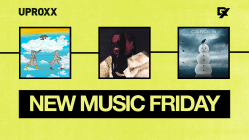
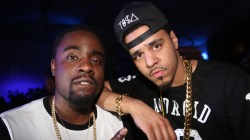

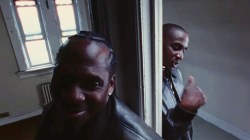
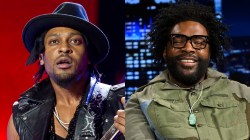

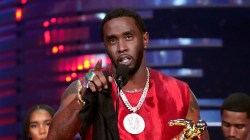
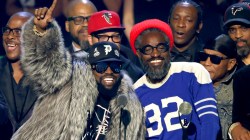
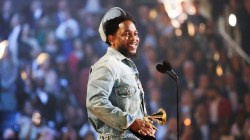
thanks, a good read
Amazing. Thank you! RIP 2pac GOAT